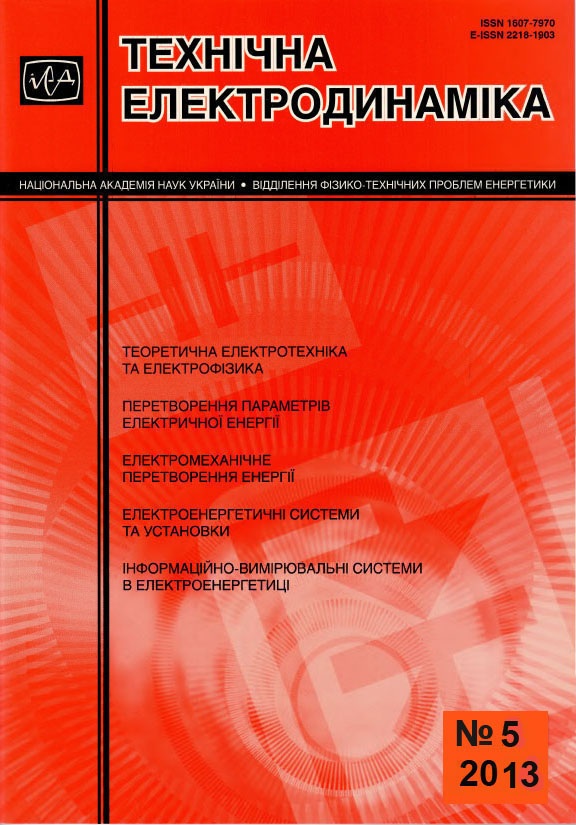Abstract
Researches of generation of ozone by the pulsed barrier discharge were conducted in the wet and the dry atmospheric air, when their absolute humidity were 17 and 0,1 mg/l, respectively. This discharge was realized in chamber with electrode geometry «cylindercylinder» and dielectric barrier with glass. The steepness of voltage pulses that fed on the camera was 0.8 kV/ns, the pulse repetition rate varied in the range 50…800 Hz. The average value of the amplitude of the density current in the discharge reached more than 1,1 A/cm2. The largest concentration of ozone, which was obtained for wet and dry air, made up 16 and 24 mg/l, respectively. The concentration of ozone and the specific energy consumption for his generation almost linearly rose with increased pulse repetition rate. It was shown that the lowest values of the specific energy consumption for generation of ozone in this discharge do not exceed the of 11 and 6 kW · h/kg for the wet and the dry air, respectively. References 10, figures 5.
References
Lunin V.V., Popovich M.S., Tkachenko S.N. The physical chemistry of ozone. – Moskva: Izdatelstvo Moskovskogo Gosudarstvennogo Universiteta, 1998. – 480 p. (Rus)
Samoilovich V.G., Gibalov V.I., Kozlov K.V. The physical chemistry of the barrier discharge. – Moskva: Izdatelstvo Moskovskogo Gosudarstvennogo Universiteta, 1989. – 176 p. (Rus)
Filipov Yu.V., Voblikova V.A., Panteleev V.I. Electrosynthesis of ozone. – Moskva: Izdatelstvo Moskovskogo Gosudarstvennogo Universiteta, 1987. – 237 p. (Rus)
Korzekwa R., Rosocha L., Falkenstei Z. Experimental results comparing pulsed corona and dielectric barrier discharges for pollution control // 11th IEEE International Pulsed Power Conference, Baltimore, MD, 1997. – P. 7.
Krasnyj V.V., Gubareb S.P., Kotsubanov V.D., Pogozhev D.P., Taran V.S., Tereshin V.I., Svets O.M. Investigation of plate–type barrier ozonizers with ac and pulse power supples // Problems of Atomic Science and Technology. Series: «Plasma physics» (8). – 2002. – №5. – Pp. 121-123.
Masuda S., Sato M. and Seki T. High-efficiency ozonizer using traveling wave pulse voltage // IEEE Trans. Ind. Appl. – 1986. – Vol. IA-22. – No. 5. – Pp. 886-891.
Mericam-Bourdet N., Kirkpatrick M.J., Tuvache F., Frochot D. and Odic E. Effect of voltage waveform on dielectric barier discharge ozone production efficiency // Eur. Phys. J. Appl. Phys. – 2012. – No. 57. − P. 30801 (Pp.1-10).
Walsh J.L., Kong M.G. 10 ns pulsed atmospheric air plasma for uniform treatment of polymeric surfaces // Appl. Phys. Lett. – 2007. – No. 91. −P. 251504 (Pp. 1-3).
Wang D., Matsumoto T., Namihira T., Akiyama H. Development of Higher Yield Ozonizer Based on Nano-Seconds Pulsed Discharge // J. Adv. Oxid. Technol. – 2010. – No. 13. – Pp. 71 – 78.
Yao S.L., Suzuki E., Meng N., Nakayama A. Influence of Rise Time of Pulse Voltage on the Pulsed Plasma Conversion of Methane // Energy Fuels. – 2001. – No. 15. – Pp. 1300 - 1303.

This work is licensed under a Creative Commons Attribution-NonCommercial-NoDerivatives 4.0 International License.
Copyright (c) 2023 Tekhnichna Elektrodynamika

